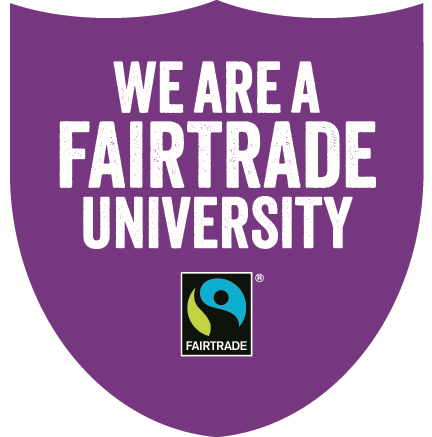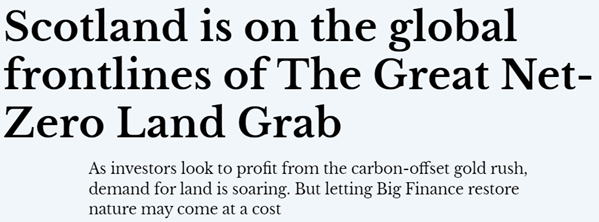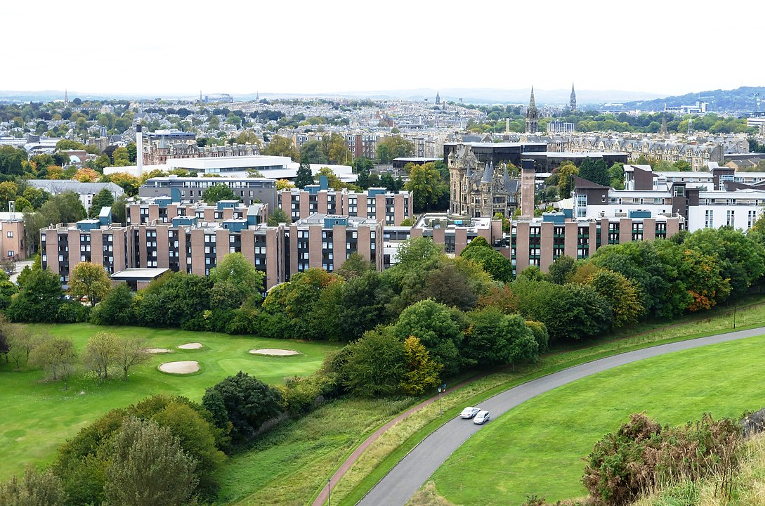Through green rankings and strategies for sustainability and climate virtue, universities attract and reproduce wealth, driving high consumption – paradoxically exacerbating climate change and unsustainability. Only by attending to inequalities can universities do away with the carbon fetish and work for actual sustainability. University staff and students, embarked on a UK-wide strike against staff exploitation and rising costs, need to make this point loud and clear!
February 2022. Starting this week, thousands of university staff members of the University and College Union (UCU) are going on strike again throughout the United Kingdom. The protests bear on cuts to pensions, and issues of pay, equality, excessive workloads and casualization. These protests question the profound, deeply entrenched and widening inequalities that pervade the higher education sector. Students have been very supportive so far – after all, staff exploitation goes together with fee and rent extraction – and this support will culminate in a student strike on the 2nd of March, the last day of strike for staff.
But there is a further reason to join and support this strike, as it represents a direct challenge to unsustainability, to the environmental crisis, and to the role that Universities play in it. In this piece, we analyse some of the current dynamics of inequality and unsustainability entrenched in higher education. We emphasise the role of green rankings as well as universities’ sustainability and carbon strategies in capturing affluent students and academic high-flyers, showing how this deepens inequalities, drives high consumption, and ultimately undermines whatever carbon efficiencies were targeted in the first place. More profoundly, this recasts decarbonisation strategies under a new light. Our main point is this: only attending to inequalities can universities begin to do away with the carbon fetish and start working for actual sustainability.
Higher education, affluence and consumption
Recent work on ‘climate-friendly’ cities in the USA shows that such cities tend to attract high earners who both displace poorer people (often of colour) and, through the greenhouse gas emissions inbuilt in their massive consumption, nearly cancel out whatever benefits might arise from decarbonisation programmes. In other words, the purported ecological benefits “are not realized precisely because of the affluence that makes living in such places possible” (Rice et al., 2020, p. 152). But more profoundly, the very decarbonisation strategies set up cannot but be ways of accruing value, as the real estate market is oriented towards young professionals with eco-philanthropic aspirations.
Similarly, higher education markets allocate desirable qualifications, and more generally desirable educational and cultural credentials. In so doing, they are an essential operator for the cultural legitimation and reproduction of planetary wealth, channelling it to desirable universities and their locations. From the beginning of the internationalization of UK’s higher education, students have been framed as income sources, both for the universities and for the UK government. As Stuart Tannock puts it, any remaining concerns with educational equality seem to ‘stop at the border’. Putting forward their ‘institutional brand’, and the cultural, social, and economic capital that goes with it, elite universities in particular have not doubted to seek wealthy international students.
Through entry requirements (e.g. International Baccalaureate, evidence of participation in voluntary activities etc.) and other processes (e.g. the offer of luxury student accommodation), there is “considerable inequality in terms of which kinds of national and international students are able to access which universities”. In the crude, patronising, neo-imperialist words of an international student consultant interviewed by Tannock, we should “accept the reality that those people who can afford to buy a Rolls Royce can buy a Rolls Royce, while those who can’t, can’t.” In attracting and fixating students from wealthy families, as well as those high-flyer staff (notably the 1.8% earning more than £100k) that raise their University’s ‘brand value’ at the same time as they increase their own social and cultural capital, ‘elite’ universities contribute to the logics of affluence and to associated consumption-based emissions.
This creates a sort of mad race, whereby the wealthier segment of the student body sing the tune to which the indebted rest have to march; and whereby the circuits of recruitment and circulation of high earning academic stars and managers drive the mechanisms shaping and reproducing the academic market. A crucial piece in this tune is student accommodation. There has been a shift of all universities and private providers to high-end student accommodation, to the detriment of standard affordable accommodation. Whilst such high-end accommodation may display some nice ‘eco’-features, with providers pledging ‘net zero’ emissions, the effects of these are, again, largely neutralised by the concentration of affluence that these en-suites and studio flats foster. More to the point, these features themselves make such concentration of affluence more likely as more and more wealth wants to appear ‘green’.
These dynamics have very real consequences for access to higher education, and for the social and economic fabric of the higher education sector and of cities where universities are located – but also, as suggested, for sustainability.
Sustainability rankings, or the desirability of the low-carbon and sustainable University
Rankings are an essential neoliberal tool for the workings of higher education markets. The proponents of rankings suggest that, for all their imperfections, these are tools of transparency, accountability and performance monitoring. However, this is a rather shallow assessment of what rankings do. First, they are meant to signal those subjected to their assessments as ‘concerned’, as doing something – even where this something is purely procedural, thus placing them on the map of relevant, culturally legitimate entities. And, secondly, through their categories and classifications, and the naturalising power of their metrics, rankings frame the ways we even conceive of places to study, work and/or live.
The Times Higher Education (THE) Impact ranking, based on the Sustainable Development Goals (SDGs), show these effects. For example, SDG 11 (Sustainable Cities and Communities) considers sustainable practices (including sustainable commuting, and provision of affordable housing for students and staff); and SDG 8 (Decent work and economic growth) includes the proportion of staff on secure employment contracts. However, these measures coexist contradictorily with multiple others, and universities are ranked only on the basis of their three highest-scored SDG goals, plus the score on SDG 17 (signalling their collaborations and work for the promotion of the SDGs as a whole).
Above all, inclusion in the ranking, and a top place in it, is meant to send a signal: here are institutions not only well placed to accrue graduates and elite staff’s economic, cultural and social capital, but also able to cater for their philanthropic aspirations and desire for sustainability. At the same time, recruiting these very students and staff contributes to validating that promise since they will supply the University with what it takes on many of these metrics. A THE survey of 2,000 international students found that sustainability credentials now play a significant role in international students’ choice of universities, and that applying students strongly embrace the SDGs. Most respondents believed that “it was important for their future career prospects to demonstrate to employers that during their time at university they developed into a sustainability-minded citizen (69 per cent)”.
 Times Higher Education Impact Rankings logo.
Times Higher Education Impact Rankings logo.

H Hoogervorst, chairman of the International Accounting Standards Board, speaking at the University of Cambridge on April 2, 2019. Source:Financial Times.
The ranking also contributes to the reproduction of a highly unequal academic market. All SDGs are monitored for 27% of their total mark through a ‘research’ metrics (derived from data obtained through Elsevier, the academic publishing giant partnering the THE ranking). As it is repeated across all SDGs of the THE ranking, this metrics is the most significant of all. Not only does it rather self-servingly fuel the reproduction of monopoly rents for the top companies involved in academic publishing. The focus on citations, ‘top journals’ (as defined by Citescore) and thus the English language, also crucially ensures the reproduction of the culturally legitimate international academic elite, whose publishing productivity in turn will contribute to the income growth and maintained status of the elite universities that employ them.
Achieving a high place on the THE ranking thus goes together with ensuring the continuous stream of revenue accruing from economic and cultural elite students and staff, but, as we have shown, this also means contributing to the inequality-unsustainability nexus further.
Fair Trade and sustainable campus lifestyle consumption
Fair Trade is one of the cornerstones of many universities’ ‘sustainable procurement’ strategy. This is despite the criticism that it is a broadly problematic scheme due to issues with obsolete pricing mechanisms that are no longer fair. Fair Trade fits too many bills for universities to acknowledge such criticisms: it sends a signal to the increasing number of affluent eco-conscious students that universities are concerned with justice and sustainability; and in this way also generates revenue. Recent research by the University Business online magazine states that “universities are finding that sustainability is not only good for students and the environment but also good for the bottom line”.
Ironically, the UK Fair Trade Foundation website acknowledges that “the biggest impact a university or college has is its graduates” while disregarding that those impacts are both positive and negative. It suggests that learning to consume ‘ethically’ will turn the mass of students into a force for good, omitting the impact of exploding consumption, be it Fair Trade or not. However, if low-carbon policies are interpreted as revenue generators, as poles of attraction for affluent students and as ranking embellishments, one can understand how universities aim to undertake visible action, such as subscribing to the Fair Trade label, that is potentially compatible with revenue increases.

King’s College London celebrated its “Fair Trade” status in its sustainability blog in 2019. Source:King’s Sustainability (kcl.ac.uk)
Like many other multinational corporations, universities claim to become ethical coaches of sorts, taking the role of (re-)educating or ‘agencing’ students’ consumption behaviour, provided this is made profitable, quantifiable and visible. Fair Trade is not the only mobilized instrument here, sustainability awards are also used to shape consumption practices while enhancing visibility.
For example, the Societies and Sport Clubs Awards by the Social Responsibility and Sustainability Department at the University of Edinburgh, where we study and teach, encourage students to showcase sustainable actions (often individual-focused) in their social media channels to increase visibility. The Sustainability Champions idea, moreover, has served as an instrument to capture student sustainability campaigns and frame them as university success. For instance, the Sustainability Champions Network has now taken the credit for a campaign to set Ecosia as the default browser in all university computers, which was started as a purely student initiative.
Sustainability through consumption is, in this case, intrinsically linked to sustainability as a performance, obscuring the contradictions between low-carbon and affluent lifestyles, displacement and inequality and allowing a depoliticised approach to the obligation of all higher education institutions, as public actors, to lead a sustainable and just transition. Captured by green capitalism, low carbon goals within the university sphere are consumption-focused and designed for the display cabinets of sustainability awards and university rankings.
Universities’ carbon strategies and rural land
Sustainable procurement is just one part of universities’ wider sustainability strategy, as universities strive to become carbon-neutral over the coming decade or two. First and foremost, this goal is to be reached by reducing carbon emissions, but universities also engage in so-called ‘carbon offsetting and sequestration’ activities for emissions which they deem ‘unavoidable’, or over which they do not have direct control. For example, some universities are considering offsetting their international students travel, as part of the marketing strategies referred to above, and in response to a particular form of green concern on the part of applicants. In their quest for carbon neutrality, institutions can either purchase carbon credits by paying someone else to reduce emissions equivalent to those that they emitted, or they can lead their own, direct sequestration efforts.
Many universities will likely go with the first option – not least because this is the cheaper and easier one. However, this approach to offsetting contributes to perverse dynamics that end up making the problem worse. In particular, carbon offsetting contributes to the increasing financialization of nature, where land is valued for its potential to repair climate damage, and where expectations of repair are quantified and included in financial packages (carbon credits and carbon futures) benefitting from tax reliefs, turning conservation into a ‘niche market for capital accumulation’.
As recently explained by Simon Fairlie, the UK Committee on Climate Change 2018 and 2020 reports plan for matching the expected/desired increase in developed urban land area (and the attendant growth in cement, steel, chemicals, and transport-based emissions this brings about) with an equivalent rewetted peatland and woodland area. This means that a lot of land is included in the offset market (both biodiversity and carbon offsets). The current explosion of the voluntary carbon market does not necessarily build an incentive for buyers of carbon offsets (and, soon, more future emissions offsets) to reduce their emissions further. It does have, however, very real consequences on land prices and land use, which is likely to directly fuel (pun intended) unsustainability further, including through unequal distribution of and exposure to environmental hazards.

The booming market for CO2 mitigation and capture is a significant threat to Scotland’s rural areas. Source:Open Democracy.
But unsustainability effects are not limited to questions of distribution. The development of the offset market will deepen inequality by bringing a lot of revenue to large landowners and will thus encourage the kind of massive consumption-driven emissions we pointed out above. It will foreclose debates about urban development itself and about the problematic characteristics of the current model of international marketization of UK higher education also pointed out above. It will further increase the UK’s dependency on food imports in times of climate change.
And finally, it will grow the green bubble which might contribute to a similar financial crash as that caused by the subprimes crisis. It is tempting for universities to serve a new class of investors, under the pretext that, as charities, they will reinvest revenues in education and that this also matches students’ and staff’s green concerns. However, like the investors into the booming student residence market, carbon offset investors (brokers) may also start demanding returns on their investments that will take primacy over any concern for genuine carbon reductions.
It is good to see that our own university (Edinburgh) has in principle rejected offsetting its carbon emissions, and that it will compensate emissions through direct sequestration instead. Opportunities for deeper engagement with ‘wider sustainability questions,’ and considerations around minimising cost in the long run are cited as reasons the tipped the balance in favour of this approach. However, this strategy may lead the University to buy up large swathes of the Scottish Highlands for their offsetting purposes and joining the increasingly crowded ranks of ‘green lairds’, which further fuel the prices of a land market targeted for investment.
The University also mentions the possibility of partnership arrangements with community groups. However, in a context in which it might risk maintaining hierarchical relations and contributing to increasing land prices, isn’t it preferable for the University to be content with decarbonising its own infrastructures as much as it can, without seeking to compensate whatever residue emissions it considers to be under its responsibility? And rather than entering into any land deals (however community-friendly), shouldn’t it support the current efforts to bring about a more equal land distribution and more actual community empowerment in Scotland?
Conclusion: stop fetishizing carbon and fight inequality!
With the loose framings of sustainability and carbon neutrality now becoming ubiquitous, green expectations play out in students’ and staff’s choice of universities as places for study and work. Universities endeavour to signal themselves as virtuous institutional brands from which students and staff can accrue green cultural capital, as well as guarantors of a green and thus moral lifestyle on and around their campuses. As we have suggested, however, structural dynamics – marketization of higher education, urban land, and rural land; and the links between affluence and consumption– not only get in the way of these green strivings: they actually harness them to create an illusion of activism whilst undermining real sustainability.
Nevertheless, more and more students and staff are keen on fighting climate change and environmental destruction in more politicised ways: putting pressure on universities for divesting from fossil fuels, closely monitoring universities’ low carbon strategies, fighting for affordable housing for students and other residents, and countering gentrification. Above all, they are now taking action for more equality by fighting for a public and free education, equality in pay and proper employment and working conditions – all of which needs to be funded through taxes which would reduce the amount of money available for private consumption.
Decarbonising is of course desperately needed, and the effort put in such strategies on different levels is very welcome. Yet without a fight for more economic and social equality, decarbonisation will fuel the inequality-unsustainability nexus further. The staff and student strike needs to make that message very loud and clear!
Teaser photo credit: Pollock Halls of Residence seen from Arthur’s Seat By Kim Traynor – Own work, CC BY-SA 3.0, https://commons.wikimedia.org/w/index.php?curid=28604064





